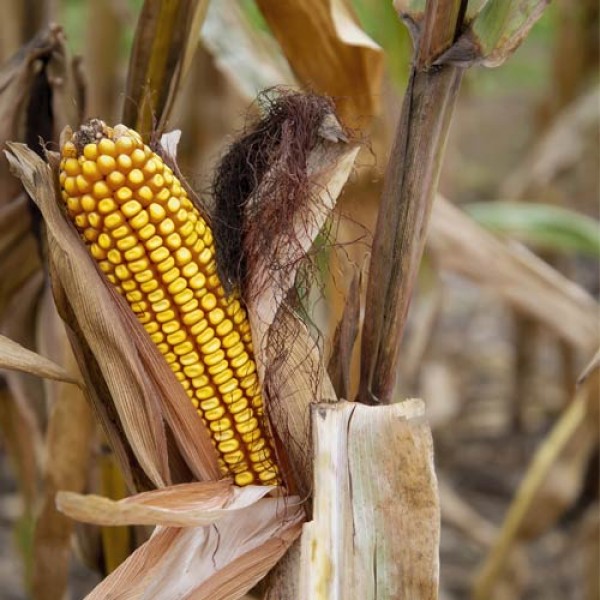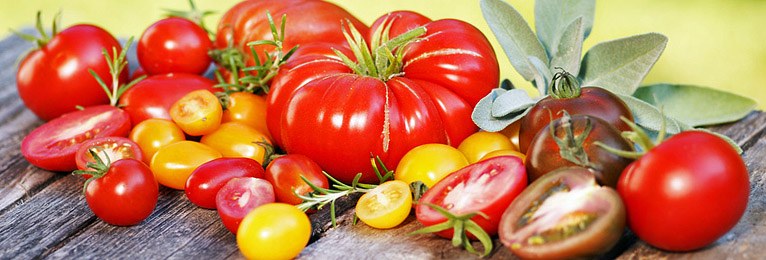The Milpa-Bed
Mixed culture of maize, beans and pumpkin
Most garden owners want a natural kitchen garden to grow healthy and pollution-free vegetables. However, the space for this is usually limited, so that only a small own harvest can be expected. Unless you combine plants that support each other`s growth, such as maize, beans and pumpkin.
The indigenous peoples of Central and South America already discovered that three vegetable plants complement each other perfectly in a small space. They put the "three sisters" pumpkin, maize and beans together in one bed. For this reason, this form of planting is also known as Aztec bed, Maya bed or, in German, often Indian bed.
People often planted small fields next to their houses, which are called milpa. The word milpa means "the near field", because the dwellings of the Maya were close to the milpa fields, where maize, beans and pumpkin were grown together in one bed. They particularly like to plant maize, climbing beans and pumpkins there. Together they produce triple yields in a very small space.
The "Three Sisters" method is an ingenious system in which each of the three plant species plays an important role. The maize serves as a support plant for the beans, which wrap around the stalk of the maize. The beans, in turn, fix nitrogen from the air and release it into the soil, which benefits the maize and pumpkin. Finally, the pumpkin serves as a ground cover, protecting and shading the soil from erosion, thereby reducing evaporation and retaining moisture.
Growing maize, beans and pumpkin in a milpa bed has many advantages. One of the most important benefits is the efficient use of the land. By planting three types of crops in the same area, space is used optimally and a greater amount of food can be produced than with conventional cultivation.
Another advantage is improved soil health. By combining the three plant species, different nutrients are taken from the soil and returned, resulting in healthy soil. The system is also sustainable, as the beans and squash improve the soil`s nitrogen uptake, reducing the need for synthetic fertilisers.
Furthermore, the "Three Sisters" method is an important part of the culture of the indigenous peoples of North America and has a long history. It has been practised for centuries and has helped people to feed themselves and build their communities. The method is still practiced by some indigenous communities today and has gained increasing attention in recent years due to its sustainable nature and potential for food security.
Overall, the Three Sisters method is an effective and sustainable approach to growing food. It makes optimal use of the land and improves soil health, while upholding the tradition and culture of the indigenous peoples of North America. The method offers an inspiring insight into the wisdom and sustainability of indigenous peoples and could serve as a model in other parts of the world.
Creating a Milpa Bed
Creating a milpa bed requires careful planning and preparation. Here are some steps to consider when establishing a milpa bed:
1. location selection: Select a sunny site with well-drained soil. The soil should be deep and fertile to support healthy plant growth.
2. soil preparation: To establish the milpa bed, the soil must be prepared. Remove weeds and loosen the soil with a hoe or cultivator.
3. Plant selection: Select maize, bean and squash plants that are suitable for the climate and soil type. Traditional varieties are often better adapted to local conditions and may be more resistant to pests and diseases.
4. planting time: The right time for planting varies according to climate and region. Usually, the milpa bed is established in late spring or early summer when soil temperatures are warm enough. Maize has a slow youth development and in our latitudes can be planted in the fields from mid-April at the earliest. For this reason, it makes sense to plant the seed indoors from March onwards. Give each maize plant its own pot right from the start, because young maize plants have strong roots and are difficult to prick out. There are two options for pumpkins: Either it can be pre-picked from April onwards, or in May it can be planted directly in the soil outdoors together with the beans.
5. Planting: Plant maize in the middle of the bed in a row, about 45 cm apart. Plant beans in the same row, about 15 cm from the maize plants. Pumpkin is planted around the maize-bean row and spreads on the ground.
6. care: To promote successful growth, you need to water the milpa bed regularly, remove the weeds and fertilise the plants. Use organic fertilisers such as compost or manure to nourish the soil and encourage plant growth.
Care:
Caring for a milpa bed is crucial for successful plant growth. Here are some tips on how to care for a milpa bed:
1. watering: the plants in the milpa bed need to be watered regularly in hot and dry weather. Water evenly, but avoid flooding the plants as this can lead to root rot. The choice of plants is also ideal in terms of water utilisation.
Watering: The plants in the Milpa bed need to be watered regularly in hot and dry weather. Water evenly, but avoid flooding the plants as this can lead to root rot. The choice of plants is also ideal as far as water utilisation is concerned: the maize forms a shallow root felt that absorbs the water arriving on the surface. The deep taproot of the bean absorbs the percolating water that is inaccessible to the maize. The squash spreads and develops additional roots wherever the stem touches the ground and can collect water away from the others.
2. weed control: regularly remove the weeds around the plants when they are young. Later, when the large leaves of the squash shade the ground, these will prevent the spread of weeds.
3. Fertilisation: Milpa beetles need regular fertilisation to balance the nutrients in the soil. However, the nitrogen-forming nodule bacteria on the bean roots already fertilise the soil somewhat through the plant itself. Look out for too slow growth or yellow spots on the plants, which may indicate a lack of nutrients. Then use organic fertilisers such as compost or manure. Synthetic fertilisers should better not be used on food crops.
4. pest control: Due to the mixed culture, the "Three Sisters" are relatively well protected against pests. Only at the beginning is it advisable to check the milpa bed daily for slug infestation and, if necessary, to remedy the situation with slug traps and copper tape. Slugs unfortunately love young bean and pumpkin plants. Monitor the plants regularly for signs of pest infestation and use natural pest control methods such as planting insect repellent plants or using natural insecticides if infestation occurs.
5. Harvesting: To harvest sufficiently large pumpkins, cut the main vine after two to three pumpkins have set fruit, so that the plant puts its energy into the three remaining pumpkins. The beans are likely to ripen first, followed by the maize in mid-summer. The pumpkin usually does not ripen until September.
By regularly tending your milpa bed, you can ensure that your plants are healthy, nutritious and produce an abundant harvest.















